- Home
- Franz Kafka
Amerika: The Missing Person: A New Translation, Based on the Restored Text Page 2
Amerika: The Missing Person: A New Translation, Based on the Restored Text Read online
Page 2
Unlike “The Judgment,” The Missing Person had a lengthy gestation—Kafka wrote at least three versions—and its roots extend far back in his imaginative life. We know from a diary entry of 19 January 1911 that as a child or adolescent he wrote a story with a related theme, in which America serves as a refuge. Then, after beginning a draft in winter 1911 (which has not survived), he wrote the first seven chapters of the novel between September 1912 and January 1913. He subsequently turned his attention to other projects, and it was not until October 1914—after he had started work on The Trial—that he wrote the last completed chapter of The Missing Person.
The title Amerika, which emphasizes the setting and by which the novel has become widely known, is not Kafka’s but rather was used by Max Brod in the first German edition in 1927—three years after Kafka’s premature death of tuberculosis at the age of forty-one. Kafka himself clearly entitled the novel Der Verschollene (The Missing Person) in a letter to Felice Bauer in November 1912, thereby underscoring the fate of the young hero.9
In the diary entry of 1911 about the juvenile “American” story Kafka recollects sitting with members of his family (unfortunately he does not specify his age at the time) writing a story featuring two brothers. One brother ends up in a prison in Europe, whereas the other—the “bad” one—escapes to America. An uncle grabbed a page from him, glanced at it, and declared to the rest of the family, dismissively, “The usual stuff.” The twenty-eight-year-old diarist describes how this verdict gave him a “glimpse of the cold space of our world” and made him feel “banished.” Those metaphors anticipate the predicament of the young hero in the opening lines of The Missing Person:
As he entered New York harbor on the now-slow-moving ship, Karl Rossmann, a seventeen-year-old youth who had been sent to America by his poor parents because a servant girl had seduced him and borne a child by him, glimpsed the Statue of Liberty, which he had been observing for some time, as if in a sudden burst of sunlight. The arm with the sword now reached aloft, and about her figure blew the free winds.
Much ink has been spilled over these introductory sentences and, especially, the surreal description of the Statue of Liberty. In famously endowing the statue with a sword rather than a torch, Kafka defied conventional expectations. Although one reviewer noted this seeming slip, on the first appearance of “The Stoker” in May 1913,10 Kafka declined to alter it in a second printing of the story in 1916, in which he made some minor changes. There can be no doubt that the choice of the sword was quite deliberate.
Some critics argue that Kafka transformed the American emblem of freedom into an icon of justice and that the sword is drawn not against “the social injustices bred by America’s capitalism . . . [but] against Karl’s conscience.”11 Others see the sword as a symbol of violence, anticipating the struggles that Karl will face against an inhumane technological civilization. Still others point to traditional representations of Justitia in European paintings. Moreover, the sword in the hand of Kafka’s alienated version of the Statue of Liberty may recall the cherubim and the fiery revolving sword that guard the gates of the Garden of Eden after the expulsion of Adam and Eve, at least in the influential old Greek translation of Genesis.12
While some readers might be inclined to approach this novel as a dream narrative, in the manuscript Kafka sought to diminish this possibility and the psychological interpretations that it would invite. In the opening lines of the novel, just after Karl has glimpsed the Statue of Liberty, Kafka first wrote the following sentence and then immediately crossed it out: “He looked up at her and dismissed what he had learned about her.” (Er sah zu ihr auf und verwarf das über sie gelernte.) That crossed-out sentence, which almost sounds postmodern, might imply that the young hero is imposing his preoccupations on the statue—precisely the kind of easy psychological explanation that Kafka sought to exclude.13 Just as it is impossible to dismiss as a nightmare the perception of Gregor Samsa in “Metamorphosis” that his body has been mysteriously transformed overnight into that of a bug (the text states quite unambiguously that “it was no dream”), we cannot simply explain away this surreal Statue of Liberty as a subjective perception of Karl Rossmann. Moreover, the placement of this altered monument at the beginning of the novel may be Kafka’s way of warning us not to take the tale that follows as a realistic account of a young man’s experiences in America.14
There has been much debate about whether Karl Rossmann develops in the course of the novel, as one would expect of the hero of a bildungsroman. Kafka himself acknowledged a debt to one of the great English novels of development, Dickens’s David Copperfield, specifically mentioning motifs shared by the two novels, such as “the story of the trunk, the boy who delights and charms everyone, the menial laborer, his sweetheart in the country house, the dirty houses etc.” However, he was critical of Dickens’s “coarse characterizations” of his figures, which, having learned a great deal about narrative art from Flaubert, Kleist, and, despite often-shoddy productions in Prague, the Yiddish theater, Kafka had been able to avoid. The Missing Person bears only a parodistic resemblance to the classic European bildungsroman, Goethe’s Wilhelm Meister, and is much closer to Jakob von Gunten, an anti-bildungsroman by the quirky Swiss modernist Robert Walser, about a character who sets out to become a nobody.15
How can we explain the sudden ability of Karl Rossmann, who has few literary or artistic interests aside from a rudimentary ability to play the piano, to suddenly imagine himself changing his American “circumstances” through the sheer power of his playing? Kafka’s diaries can shed some insight here, especially a series of seminal entries in June 1910 in which Kafka (or rather his partly biographical, partly fictional alter ego) explores how his education and upbringing have made it impossible for him to develop naturally and left him instead with a “dead bride”—a metaphorical term for his full potential. Could Karl have a comparable potential locked inside him? Be that as it may, his dreams of artistic success anticipate the last completed chapter of the novel, which features a giant theater and a character named Fanny who tells him that he is indeed an artist.16
The element of social criticism in The Missing Person is more pronounced than it is anywhere else in Kafka’s oeuvre. For instance, at one point Karl Rossmann remarks that America is a country where “one could not hope for pity” and where only those who are fortunate seem to “enjoy their good fortune amid the indifferent faces on all sides.”17 At such moments Kafka’s critical perspective on American society in the robber-baron era can seem remarkably congruent with that of American novelists such as Theodore Dreiser in Sister Carrie (1900) and Edith Wharton in The House of Mirth (1905).18
Far more characteristic of Kafka’s first novel than such explicit social criticism, however, are passages in which he transforms abstract critiques of modern urban civilization into vivid tableaux, thereby anticipating such early movie classics as Fritz Lang’s Metropolis and Charlie Chaplin’s Modern Times.19 Take, for instance, the depiction of the busy telegraph room in the enterprise of Karl’s American uncle, where an employee’s right arm lies almost inert, “as if it were a heavy burden,” and “only the fingers twitched away at a rapid and inhumanly uniform pace”; or the scene at the gigantic Occidental Hotel, in which the heads of the information-dispensing underporters become so hot they need to be doused with water.20 Through such unexpected details Kafka suggests analogies between the business world and the factories of America, which he never describes from the inside. Kafka, who as an accident insurance lawyer by day visited factories throughout Bohemia, could easily imagine the working conditions in similar enterprises in America.21 On one occasion he expressed surprise that the workers injured in factory accidents did not come and break down the doors at his insurance company.
In creating his vision of America, Kafka drew on reportage by a Hungarian Jewish socialist called Arthur Holitscher, which he first read in installments in the journal Neue Rundschau. He bought a copy of Holitscher’s subsequent book Amerika Heu
te und Morgen (America Today and Tomorrow) for his personal library and also attended an illustrated lecture by a Czech Socialist called František Soukup about his travels in America, which then also appeared in book form. Holitscher and Soukup both attribute the cruelly hectic pace of life in America to the predominance of the profit motive: “This murderous tempo, this fearful rush which only ceases at the grave.”22
While Kafka does draw on such material, he reveals himself to be a creative borrower. Take, for instance, the odd depiction of the Statue of Liberty in the opening paragraph of the novel. Although Kafka does not describe Ellis Island, he may be grafting onto his description of the statue an image that Holitscher used in portraying the island: “No Blake could have drawn or sung of the avenging angel who reigns over this island in a cloud of fear, whimpering, torture and blasphemy every single day that we spend in this free country.”23 It would be entirely characteristic of Kafka’s magpielike ways if he had borrowed that Blakean angel from Holitscher, placing her instead on the pedestal of the Statue of Liberty and using the word “free,” which Holitscher imbues with heavy sarcasm, in a characteristically wry manner.
Kafka playfully acknowledges his own prior readings about America when he has Karl compare his impressions of an ostensible Irishman called Robinson with a warning he read somewhere that newcomers should be wary of the Irish in America: Holitscher asserts that the Irish produced the most successful type of “political padrone, boss, slave-holder, and vote catcher” and even records a passenger in steerage asking hopefully: “How long do you have to live in America before becoming an Irishman?”
Kafka himself had a number of American relatives, such as his uncle Otto Kafka, who may have been a partial model for Karl Rossmann’s American uncle, and a namesake cousin, Franz or Frank Kafka, who left for America at the same age as Karl.24 Like the uncle in the novel, Otto Kafka was a self-made man who, after a series of colorful adventures in South Africa and South America, emigrated to the United States, where he eventually accumulated sufficient wealth to buy a home near the Rockefeller mansion at Tarrytown, New York. Yet we need to approach these tantalizing biographical items warily, since it is difficult to distinguish between biographical sources, Kafka’s readings about America, and his own inventions. And while the tone of a letter from Otto Kafka to the U.S. assistant attorney general (cited by Anthony Northey in his thoroughly researched 1991 study Kafka’s Relatives) is indeed comparable to the voice Kafka attributes to the fictional uncle, there is also something almost generic about such rags-to-riches stories.25
As the great Argentinean writer Jorge Luis Borges suggested26—and as critics such as Robert Alter have specifically shown in the case of The Missing Person27—Kafka wove numerous religious, and in particular Old Testament, motifs into his portrayal of Karl’s American adventures, raising questions for us as readers. To what extent is a metropolis such as New York, with the hundred thousand “eyes” of its many Babel-like skyscrapers, at the mercy of those winds and of the “restlessness” wafting in from the sea? What, for instance, are we to make of the mysterious gales blowing through the vast mansion that Karl visits outside New York, especially near the chapel? How should we read images such as that of “a glass roof stretched over the street . . . being violently smashed into fragments at every moment”?
However dark the plight of his heroes, Kafka himself never loses his sense of humor. In The Missing Person that humor is often hidden between the interstices of his sentences. The discrepancy between Karl’s relentlessly sober perceptions and the often-ludicrous events in which he is caught up make it difficult for us not to chuckle in spite of our increasing empathy with the hapless young hero. Take, for example, his exchanges with the ostensible Irishman Robinson, which are punctuated by precise descriptions of the latter’s messy eating habits, or the description of the bathing rituals of Brunelda, a grotesque character whose Wagnerian-sounding name turns out to be quite apt. Moreover, Karl’s lack of a strong sense of identity gives rise to a number of comic scenes, especially those featuring his dubious companions Delamarche and Robinson. Worth mentioning in passing—since the names of Kafka’s characters can be telling—is the meaning of the surname of the servant who seduces Karl: Brummer (Buzzer), or “noisy fly,” an appropriate, if unsettling, name for her, especially since the Ross in Karl’s surname Rossmann means “steed” or “horse.”28
Readers may well be puzzled by the fascinating but enigmatic last completed chapter. Heightening the enigma is the gap in the novel just before this chapter: after a brief account of Karl’s entrance into a brothel-like institution with an industrial-sounding name, Enterprise Nr. 25, the narrative breaks off, and then without any transition we find ourselves reading a poster in which a mysterious theater advertises its openings. When Kafka finally sat down in 1914 to write this chapter (which Max Brod entitled “The Nature Theater of Oklahoma,” even though it had no title in the manuscript), he may have been attempting to do with The Missing Person what he had already done with The Trial, namely, first write a final chapter and then try to fill in the missing parts. However, as in the case of The Trial, he never did fill in the gaps. So inevitably readers will come away from this chapter, and indeed from the novel as a whole, with divergent interpretations, depending on which level of meaning they choose to emphasize: the social, the meta-physical, the psychological, the apotheosis or parody of the American dream, and so on.29
There are two alternative versions of how Kafka wanted to end this never-completed novel. According to Brod, he intended to conclude it in a conciliatory fashion, and he used to hint smilingly that within “this ‘almost limitless’ theatre his young hero was going to find again a profession, some backing, his freedom, even his old home and his parents, as if by some paradisiacal magic.”30 Perhaps. But on the other hand, in a diary entry of 30 September 1915 Kafka explicitly compared the fates of the heroes in The Missing Person and The Trial: “Rossmann and K., the innocent and the guilty, both executed without distinction in the end, the innocent one with a gentler hand, more pushed aside than struck down.”31 Characteristically ambivalent about the kind of ending he wanted, and having worked on the novel on and off for three years, he may at some point have changed his mind about Karl’s fate.
In the chapter featuring the Theater of Oklahama (Kafka consistently misspelled the name of the state), the “biggest theater in the world” claims that it can take on all who apply. But how credible is the organization? Will it finally allow Karl to reach a degree of fulfillment? Some critics claim that the theater represents a model of religious redemption; others, a social utopia; others still, a surreal version of the American dream. Finally, what are we to make of the decision by Karl, who has lost his identification papers, to identify himself as “Negro,” the nickname he claims was given him in previous positions (which Kafka never got around to describing)?32 The insertion of the word negro into the text was a deliberate act on Kafka’s part, for he had originally written “Leo”—perhaps an allusion to an alter ego, Leopold S., who engages in a transparently autobiographical, if enigmatically fragmentary, dialogue with a character named Felice S. in a diary entry of 15 August 1913—then went back and changed the name nine times to “Negro.”33 Certain signs indicate a turn for the better—for example, Karl has a couple of promising encounters with figures from his past—that might seem to bear out Kafka’s purported plans for a positive ending. However, a grim image in Holitscher’s travelogue—a photograph depicting a lynching with a group of grinning white bystanders, which Holitscher sarcastically entitled “Idyll aus Oklahama” (Idyll from Oklahama), with the same misspelling as in Kafka—might make one lean toward a darker interpretation of this chapter and of Karl’s final journey.
The multilingual Kafka was acutely aware of the challenges facing translators and of the need to negotiate between sometimes conflicting linguistic and literary claims. Though he praised his first Czech translator, Milena Jesenská, for her faithfulness to his German, he also asked “w
hether Czechs won’t hold its very faithfulness against you.” His comments on her Czech rendering of the first two sentences in the novel are particularly revealing, since this is one of the trickier passages in the book. What, for instance, are we to make of the ambiguous statement that Karl has been sent to America by his “arme Eltern” (poor parents)? Kafka was not happy with Milena’s decision to eliminate the ambiguity of “poor” by inserting the adjectival phrase “financially needy,” suggesting that Karl’s parents are impoverished. He emphasized that arme (poor) “here also has the secondary meaning: pitiable, but without any special emphasis of feeling.”34 Could this reference to Karl’s “poor parents” be an ironic, or even sarcastic, comment by the narrator? Perhaps. But Kafka disclosed another interpretative possibility when he revealed to Milena that the expression mirrors Karl’s feelings toward his parents: “an uncomprehending sympathy that Karl, too, has with his parents.”35
Kafka also commented on the “freie Lüfte” (literally, “free airs”) blowing about the Statue of Liberty. He noted that the German phrase is “a little more grand” than Milena’s Czech rendition as “free air”—like English, Czech cannot easily use the word air in the plural. But then he added, with his characteristic awareness of the inherent limits of translation, that “there’s probably no alternative.” I ended up choosing the phrase “free winds,” which like Milena’s Czech term is less elevated than the original German, partly because I wanted to retain that simple but resonant word free.

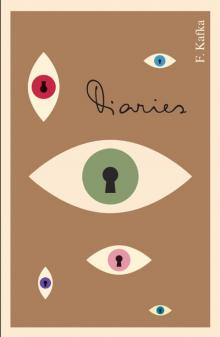 Diaries of Franz Kafka
Diaries of Franz Kafka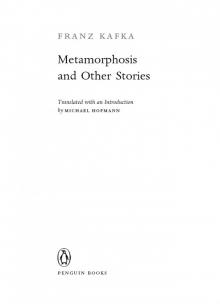 Metamorphosis and Other Stories
Metamorphosis and Other Stories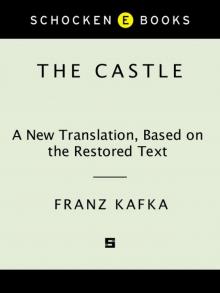 The Castle: A New Translation Based on the Restored Text
The Castle: A New Translation Based on the Restored Text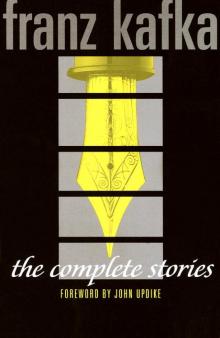 The Complete Stories
The Complete Stories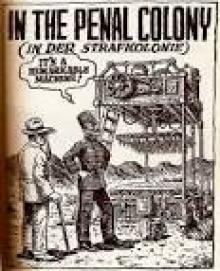 In the Penal Colony
In the Penal Colony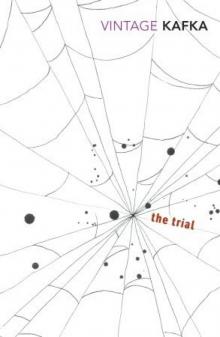 The Trial
The Trial Amerika
Amerika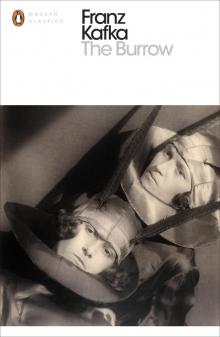 The Burrow: Posthumously Published Short Fiction
The Burrow: Posthumously Published Short Fiction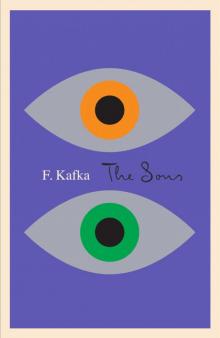 Sons
Sons Letters to Milena
Letters to Milena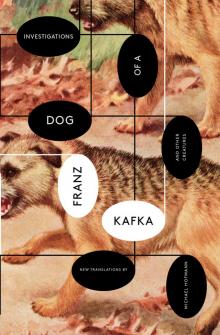 Investigations of a Dog: And Other Creatures
Investigations of a Dog: And Other Creatures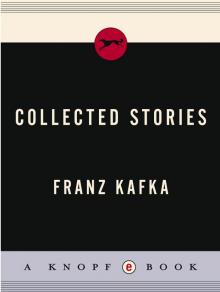 Collected Stories
Collected Stories The Great Wall of China
The Great Wall of China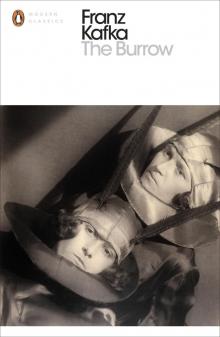 The Burrow
The Burrow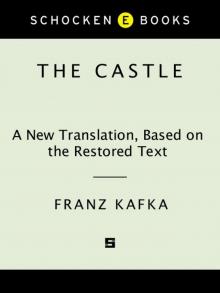 The Castle
The Castle The Meowmorphosis
The Meowmorphosis The Sons
The Sons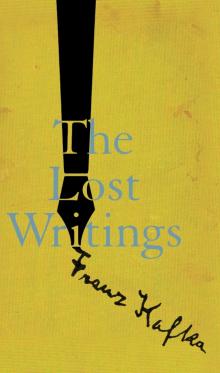 The Lost Writings
The Lost Writings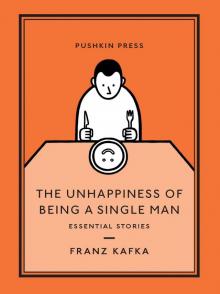 The Unhappiness of Being a Single Man
The Unhappiness of Being a Single Man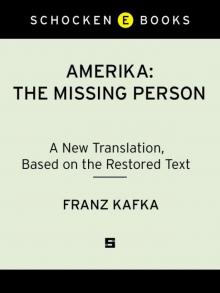 Amerika: The Missing Person: A New Translation, Based on the Restored Text
Amerika: The Missing Person: A New Translation, Based on the Restored Text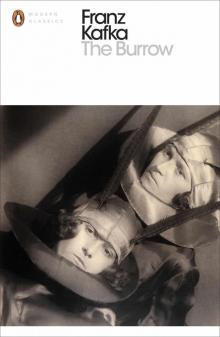 The Burrow: Posthumously Published Short Fiction (Penguin Modern Classics)
The Burrow: Posthumously Published Short Fiction (Penguin Modern Classics)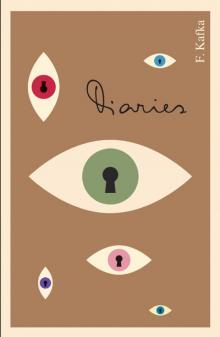 The Diaries of Franz Kafka
The Diaries of Franz Kafka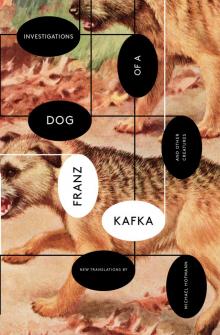 Investigations of a Dog
Investigations of a Dog The Metamorphosis and Other Stories
The Metamorphosis and Other Stories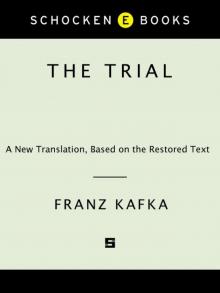 The Trial: A New Translation Based on the Restored Text
The Trial: A New Translation Based on the Restored Text